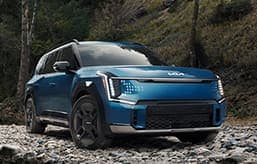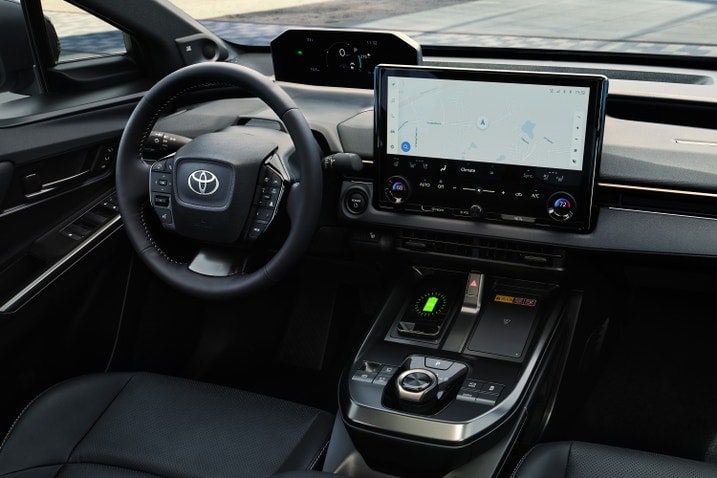- Formerly the bZ4X, Toyota's electric crossover becomes simply the bZ for 2026.
- Front-wheel-drive and all-wheel-drive trims are available, both with more power.
- It boasts increased range of up to 314 miles.
2026 Toyota bZ First Look: New Name, New Face for Toyota's EV SUV
Toyota adds some much-needed power and range to its crossover EV
Even Toyota knew the name bZ4X was simply too bizarre for the North American market. So, for 2026, the two-row crossover, which competes with the Hyundai Ioniq 5 and Ford Mustang Mach-E, will be mercifully known as just the Toyota bZ.
With the name change comes a significant update to the rest of the car, including some powertrain updates. More powerful motors bump output for the all-wheel-drive models to 338 horsepower from 214 horsepower in the outgoing bZ4X; front-wheel-drive versions increase to 221 horsepower, up from 201 hp. Battery capacity also rises, to up to 74.7 kWh. Standard Toyota naming conventions apply and include: XLE FWD, XLE FWD Plus, XLE AWD, Limited FWD and Limited AWD. Range varies across the lineup from 236 miles (XLE FWD with a smaller 57.7-kWh battery) to 314 miles of Toyota-estimated range (XLE FWD Plus).
A NACS charging port gives the bZ easier access to Tesla's Supercharger network and allows the bZ to charge at up to 150 kW in ideal conditions at DC fast-charging stations. Toyota cites charge times of less than 30 minutes to bump energy from 10% to 80%. A new battery preconditioning system readies the battery for optimal fast-charging times in cold weather. There's also a new 11-kW onboard charger, which should improve Level 1 and Level 2 charge times. The outgoing bZ4X used a 7-kW onboard charger.
The newfound power produces better acceleration. Toyota says all-wheel-drive trims need only 4.9 seconds to reach 60 mph. Front-wheel-drive models will require 8.0 seconds.
New standard steering-wheel-mounted paddles enable activation and tuning of the regenerative braking, the lack of which was one of our biggest gripes about the 2025 bZ4X. Having the option of one-pedal driving is now requisite on EVs, and those without it lack a key component of the EV ownership experience.
Restyled and updated inside and out
The bZ's nose gets restyled and still uses LED headlights. The fender flares are redesigned and Toyota is making color-matched fenders available with certain paint colors, giving the whole affair a more cohesive look. Inside, there's a larger 14-inch touchscreen and 64-color ambient lighting.
A water-to-water heat exchanger — the same one used for the new battery preconditioning mode — is used for both heating and cooling the cabin. This tech isn't new, but it's more efficient, if slower, than electric-resistance heating and it's rapidly becoming standard on EVs that are serious about efficiency.
Heated front seats and a heated steering wheel are standard. Ventilated front seats and heated rear seats are available, as is radiant front seat heating for feet and legs. A 1,500-watt household-style outlet is also available and capable of powering high-demand devices.
Standard fare
Toyota's Safety Sense 3.0 suite of driver assist tech is standard and includes adaptive cruise control, lane centering, automatic emergency braking, blind-spot warning and rear cross-traffic alert. More advanced features like low-speed hands-free driving, including lane change and front cross-traffic alert, come on Limited trims.
XLE trims will come with 18-inch wheels while Limited trims get 20-inchers. Every bZ offers two wireless phone chargers and rain-sensing wipers.
Pricing for the bZ hasn't been announced yet, but expect to see it at dealers in the last half of this year.






 by
by  edited by
edited by